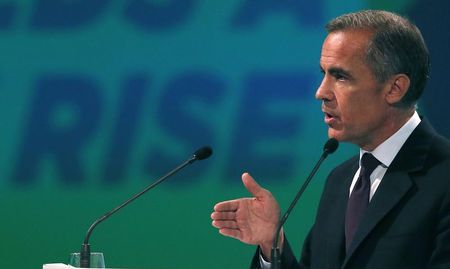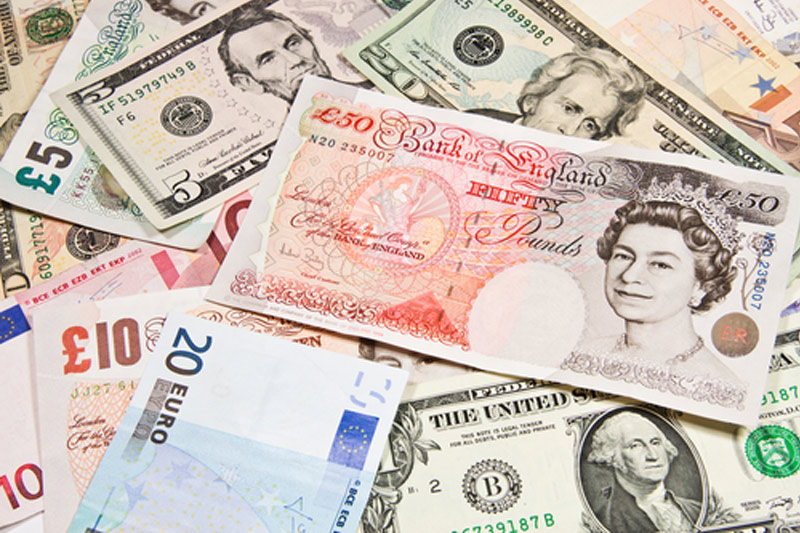By Jemima Kelly
LONDON (Reuters) - Sterling hovered near a 10-month low on Tuesday and the cost of hedging against further weakness soared to three-year highs as investors worried about the potential impact of a Scottish vote for independence.
So acute are those worries that investors chose to sell into a brief bounce in the pound after Bank of England Governor Mark Carney said that an interest rate rise next spring was possible. His comments came after better-than-expected data showed British industrial output rising the most in six months.
On a normal day, such news might have lifted the pound, which suffered its biggest one-day drop against the dollar in 2 1/2 years on Monday. But increasing concern that Scotland could split from the UK dragged the pound down.
A TNS poll overnight showed a surge in support for those who intend to vote "Yes" to Scottish independence in the Sept. 18 referendum.
Though the poll still showed a narrow lead for those who planned to vote "No", it came just over a day after another poll put the pro-independence "Yes" camp in the lead for the first time: 51 percent for, 49 percent against keeping the three-century-old union intact.
Sterling rose briefly to a day's high of $1.6157
Carney added that a currency union between an independent Scotland and the rest of the UK - which pro-independence leader Alex Salmond has insisted is achievable - would be "incompatible with sovereignty".
Though sterling has seen a full five cents knocked off its value against the dollar in the past week as concerns over Scotland have mounted, some said that in the event of a "Yes" vote, it would fall further.
"Even though the market has priced greater risk, I don't think they've fully priced in the ramifications of a 'Yes' vote," said Chris Turner, head of currency strategy at ING.
"It would have huge ramifications, not only for BoE policy, but many other issues, in terms of Scottish fiscal policy, who's going to be the lender of last resort, and so on."
COSTLY PROTECTION
In the options market, the cost of hedging against further near-term sterling weakness climbed to its highest since November 2011. Sterling/dollar one-month implied volatility rose to 10.9 percent
"Scotland leaving the UK causes considerable uncertainty because there is no plan for what we do afterwards and ... uncertainty is the enemy of financial confidence," said Kit Juckes, macro strategist at Societe Generale in London.
Against the euro, which is itself struggling against the dollar, the pound managed to edge up 0.2 percent to 80.25 pence (EURGBP=D4). It had slipped nearly 1 percent against the single currency on Monday.
Some traders fear a Scottish split would leave Britain with higher debt and a smaller domestic market that could hurt future investments. And investors have already pushed back expectations of when the Bank of England will hike interest rates after the latest polls.
Added to that a possible downgrade by rating agencies, uncertainty over North Sea oil revenues, possible trade barriers between the two countries and, crucially, the issue of which currency the Scots would use all help to paint an uncertain picture of Britain's economic outlook, analysts said.

Societe Generale's Juckes said that a Scottish vote for independence would also raise the likelihood of a British exit from the European Union, because of the advantage it would give to the Conservative party, which has promised an EU referendum. That would be a "major negative for sterling", he said.
(Editing by Larry King)
